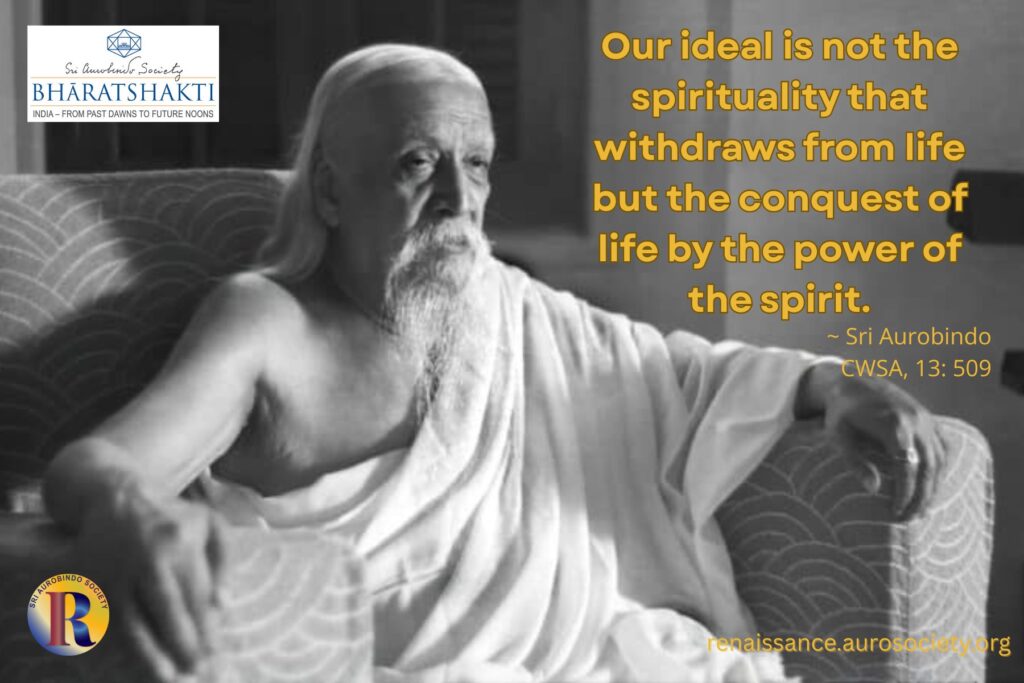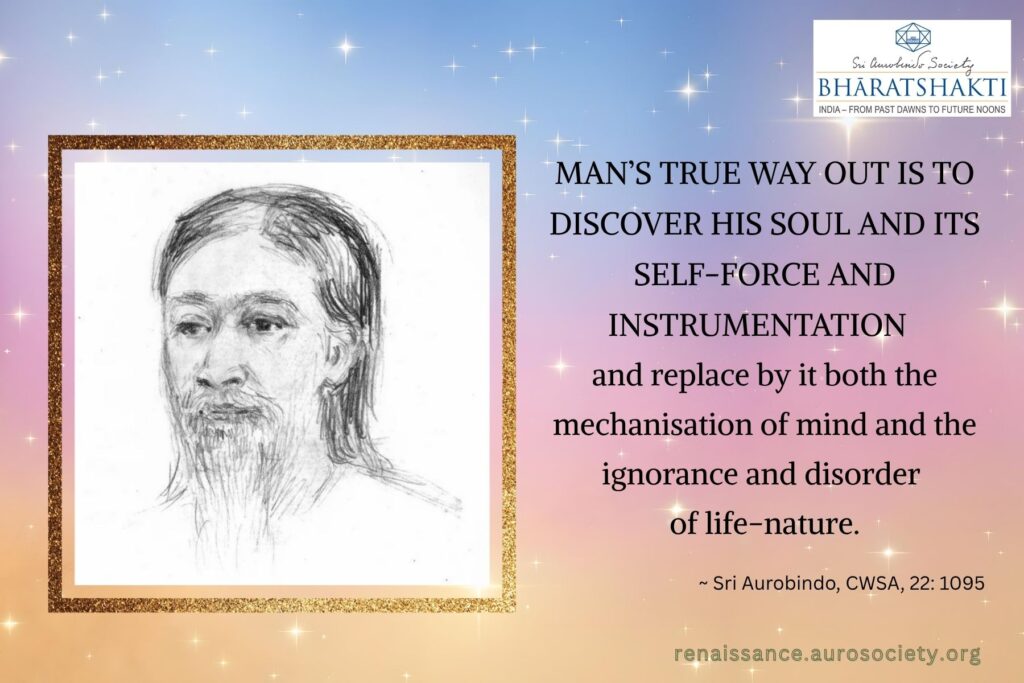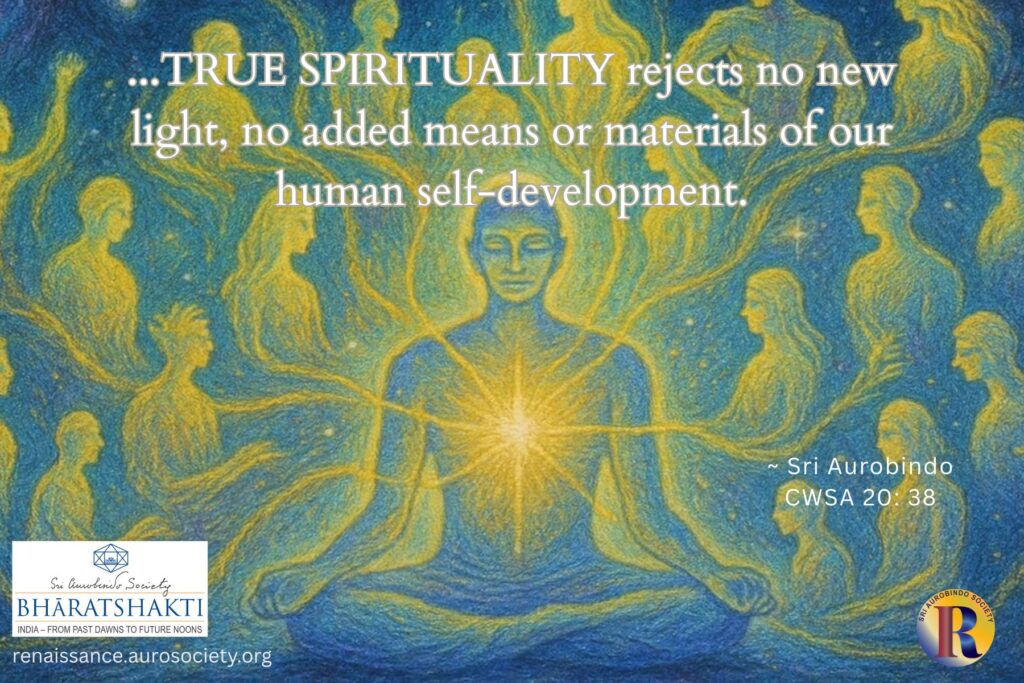Vol. III, Issue 5
Author: Kireet Joshi
We live in times when soliciting donation for charitable causes has evolved into an art form, if I can use that phrase. Most of us have seen advertisements which are worded to evoke a certain sentiment, with appropriate pictures for complete effect. Such ‘calls for charity’ are found abundantly in all forms of mass media – print, broadcast, online, social, even on roadside hoardings.
Charitable organisations seem to have mastered the art of shaking up people’s sleeping conscience. The targets are mostly the well-to-do middle- and upper-income sections who are otherwise so occupied with their lives and absorbed in their lifestyles. The idea is that some of them will be ‘moved’ enough to open their wallets and cheque books and help the ‘needy.’
“The existence of poverty is the proof of an unjust & ill organised society, and our public charities are but the first tardy awakening in the conscience of a robber.”
(Sri Aurobindo, CWSA, Vol. 12, p. 447)
But perhaps it is also necessary to spend a few minutes reflecting on the question: why give? Or a better question would be: why should I give? Or not give? Such questioning requires a sincere checking-in with oneself, especially about one’s motivations.

Why Give?
Am I giving because it is the ‘moral-ethical-socially responsible’ thing to do? Am I giving because I really believe in the ‘cause’? Do I even know enough about the ’cause’ for which I am about to give? Do I know how my donation will be actually utilised? Will it actually go toward the ’cause’ or will it end up as part of the big fat salaries for the NGO directors and marketing staff or be simply used up for their huge administrative expenditure?
Some more questions may come up: Why should I even bother about how the money I give will be used? Isn’t my job over once I have sent the cheque? After all, am I not giving simply because I will get a tax benefit because of this big donation? So why am I calling it a ‘moral’ thing? Isn’t it selfish of me to get tax benefits from this donation?
The deeper the line of questioning, the greater is the need for stepping back from the first ‘moralistic’ urge to ‘help the needy.’ It is important figure out the source of this urge itself. From where does this instinct arise?
Also read:
Empathy – the Origin of True Charity
Is it coming from our emotional-vital ego which might feel a sense of pride at having done something good for the ‘less fortunate’ among us? Is it a movement of our mental ego to help get rid of a bit of its guilt or shame or regret for enjoying a luxurious life while so many poor out there struggle for even the most basic necessities? Is it really a movement of our higher, more compassionate, empathetic layer of our vital, emotional part?
How can we be sure? Or should we even bother about all this introspection and instead merely do the ‘right thing’ by helping those in need? But then, what is indeed the ‘right thing’?
Nature of Giving
So many questions. How to know what to do? Perhaps the answer can be found in understanding the nature of ‘giving’ itself.
As with tapasya, all giving also is of an ignorant tamasic, an ostentatious rajasic or a disinterested and enlightened sattwic character. The tamasic gift is offered ignorantly with no consideration of the right conditions of time, place and object; it is a foolish, inconsiderate and in reality a self-regarding movement, an ungenerous and ignoble generosity, the gift offered without sympathy or true liberality, without regard for the feelings of the recipient and despised by him even in the acceptance.
(Sri Aurobindo, CWSA, Vol. 19, p. 490)
The rajasic kind of giving is that which is done with regret, unwillingness or violence to oneself or with a personal and egoistic object or in the hope of a return of some kind from whatever quarter or a corresponding or greater benefit to oneself from the receiver.
The sattwic way of giving is to bestow with right reason and goodwill and sympathy in the right conditions of time and place and on the right recipient who is worthy or to whom the gift can be really helpful. Its act is performed for the sake of the giving and the beneficence, without any view to a benefit already done or yet to be done to oneself by the receiver of the benefit and without any personal object in the action.
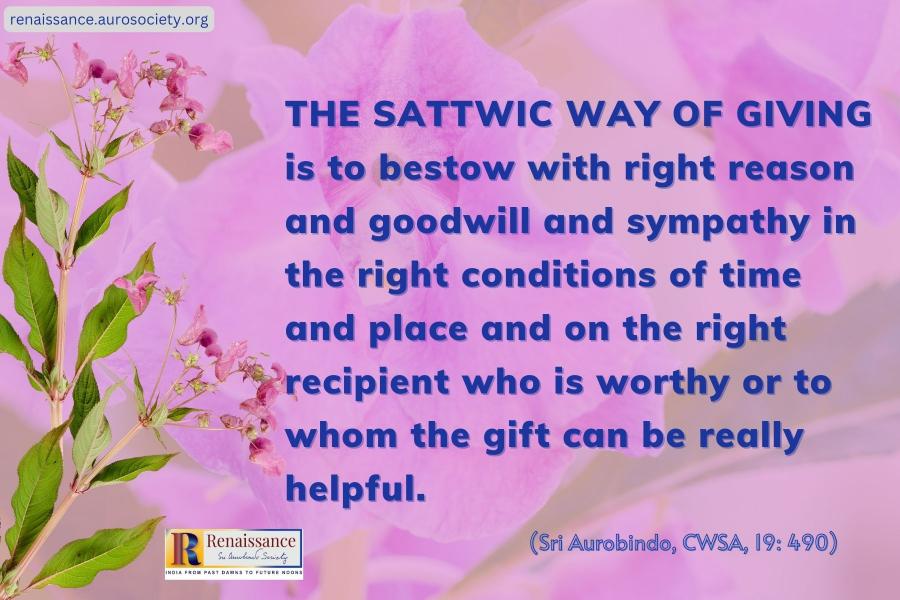
Or perhaps the answer lies deeper.
But even charity and altruism are essentially egoistic in their immediate motive. They are stirred by the discomfort of the sight of suffering to the nervous system or by the pleasurableness of others’ appreciation of our kindliness or by the egoistic self-appreciation of our own benevolence or by the need of indulgence in sympathy. There are philanthropists, who would be troubled, if the poor were not always with us, for they would then have no field for their charity.
(Sri Aurobindo, CWSA, Vol. 13, p. 454)
Ego’s Motives
Sri Aurobindo mentions here many possible underlying motives for indulging in charity. All of these motives are however egoistic in nature – from discomfort to one’s nervous system when confronted with the sight of suffering to a craving for appreciation (from others or from one’s own self). Even the vital’s need to indulge in sympathy can be a motivation for a philanthropist.
Does it mean there is no such thing as genuine charity or altruism?
Charity, like all things, must be the result in us of a conscious and reasoned will, for impulse is synonymous with error and above all with egoism.
(The Mother, CWM, Vol. 2. p. 104)
“Fling not thy alms abroad everywhere in an ostentation of charity; understand & love where thou helpest. Let thy soul grow within thee.”
(Sri Aurobindo, CWSA, Vol. 12, p. 447)
Only through a sincere and honest in-search we can begin to know whether our act of altruism is truly an unselfish or non-egoistic act. Because more often than not, “altruism is only the sublimest form of selfishness” (Sri Aurobindo, CWSA, Vol. 12, p. 455)
But being generous is not only about giving material charity.

Our Offerings in the ‘Generosity’ Issue
Speaking of the last four attributes in the Mother’s symbol, the Mother once said that the soul-qualities of Goodness, Generosity, Equality and Peace concern our attitudes toward humanity. As we open this issue on the theme ‘Generoristy’, it is also important to recall these words of the Mother:
“It is a mistake to consider service to humanity as the highest expression of service to the Divine. To do so is to remain far too confined within the limits of an exclusive human consciousness.”
(CWM, Vol. 14, p. 276)
Keeping this in consideration, our selection of passages from the Mother and Sri Aurobindo for our guiding light feature sheds light on some key facets related to ‘Generosity’. The themes highlighted in these passages are then elaborated in other features.
Generosity as a Virtue
For our Sādhanā series, we highlight a prayer which reminds us to pray for a generous heart and boundless love to permeate the sorrowful earth with love and mercy. Generosity also means wideness of the heart. As the Mother once said: “A generous heart always forgets the past offences and is ready to reestablish harmony.” (CWM, Vol. 17, p. 357). We present a beautiful story by Sri Aurobindo, where we find a high ideal of forgiveness that marks the highest Aryan culture of India.
In another Bengali writing, Sri Aurobindo speaks of the kindness, generosity, self-control, charity and other noble qualities that he witnessed among the thieves, robbers and other convicts during his twelve months in Alipore Jail.

From Goodness to Generosity
Building upon the insights presented in the previous issue on Goodness, in this ‘Generosity’ issue we feature three passages from Sri Aurobindo that speak of the inner significance of practicing higher virtues. A few more passages from Sri Aurobindo help us understand the psychological foundations of altruism, its limits and potentiality for facilitating self-development.
Last month in our Goodness issue, we published the Mother’s talk on the meaning of true and sublime charity. In this issue we include a short essay by Nolini Kanta Gupta which serves as another reminder of what is true charity. We also feature a conversation of the Mother where she speaks candidly that most ideas people have of serving the humanity are nothing but sign of personal ambition. She enlightens us that the best way to serve the humanity is to offer oneself entirely, truly, most generously to the Divine.
In another conversation the Mother speaks on giving oneself sincerely to the Divine without bargaining. She also narrates a beautiful story about perfect giving. In her meditation on Balsam ‘Generosity’ flower Sheeba Naaz explores the subtle but important difference between dakshinā, bhikshā and dāna.
On Money
If Integral Yoga is Yoga in real-life and for the transformation of all Life, the subject of money can not be left unaddressed. What is the right attitude a sadhak on the path of Integral Yoga should have toward money? This and several related questions related to money were addressed by Sri Aurobindo and the Mother in many of their writings and conversations. Chapter IV in the book ‘The Mother‘ also gives a deep insight into this topic.
A short article by M.P. Pandit presents a good summary of several essential points from the teachings of the Mother and Sri Aurobindo on this topic of money. We also feature words of the Mother where she explains that wealth is a force of nature which creates harmonious balance if circulated and utilised for its true work. She advises that each one must find in one’s highest consciousness the best possible use of the money.
We also feature an excerpt from a conversation between a group of children and the Mother where she explains that both generosity and avarice are deformations of a higher truth.
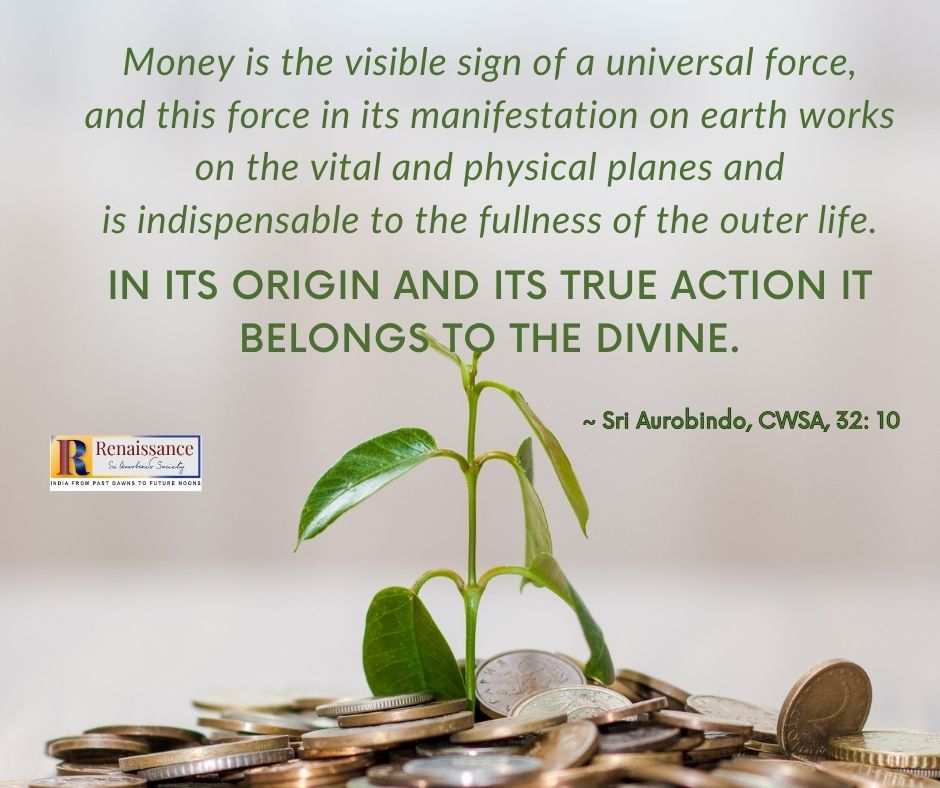
Other Offerings
In our Insightful Conversation series, we speak with Dr. Chhalamayi Reddy on the topic of bringing Indian-ness in schools. An award-winning principal with more than 30 years of experience, she shares her experience and insights.
We continue with Part 3 of the biography of Major Somnath Sharma written by Shyam Kumari. This month we conclude Rajeshwari’s series on health and healing. The author gives a few examples of how our ancestors emphasised physical and mental discipline before and during the yatra to ensure that the yatris were physically fit, mentally energised and spiritually uplifted.
As always, we offer this work at the lotus feet of Sri Aurobindo and the Mother.
In gratitude,
Beloo Mehra (for Renaissance Editorial Team)

~ Design: Beloo Mehra

